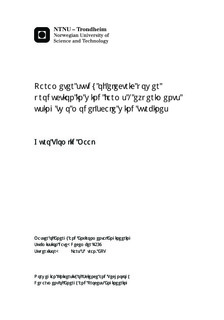Parameter study of electric power production in wind farms - experiments using two model scale wind turbines
Master thesis
Permanent lenke
http://hdl.handle.net/11250/2350000Utgivelsesdato
2014Metadata
Vis full innførselSamlinger
Sammendrag
A parameter study investigating the effects of adjusting tip speed ratios (TSR) and turbine distance in a model scale wind farm was conducted in the wind tunnel facility at NTNU. The aim was to identify optimal turbine operation and wind park design of the two model scale wind turbines when the downstream turbine operates in the wake of the upstream turbine. Experiments were conducted with turbine distances of 3.2, 5.3 and 9.0 diameters, and the power coefficient (Cp) and trust coefficient (Ct) were mapped with TSR steps of 0.5. A shear generating grid was constructed to imitate typical offshore wind conditions with turbulence and shear. The experimental study revealed signicant positive effects in Cp as well as a moderate increase in thrust when increasing the distance between the turbines. Bothturbines had optimal tip speed ratios of 6 in an undisturbed flow, but the optimal TSR of the downstream turbine was found to be 4, 4.5 and 5 in varying turbine distances from 3.2 to 9.0, respectively. The optimal tip speed ratio of turbine 1 seemed to be slightly shifted towards a TSR of 5.5, but this shift was only present at the two smallest turbine distances. With these distances, the increased energy extraction of turbine 2 was larger than the energy loss of operating turbine 1 at a lower tip speed ratio than the design value. All turbine performance measurements conducted in a shear flow were also compared to similar measurements conducted in uniform flows with and without turbulence. The comparison revealed that turbulence has a signicant positive effect on the efficiency on a downstream turbine,whereas the wind shear was found not to have any noticeable effect on the turbine performance.
